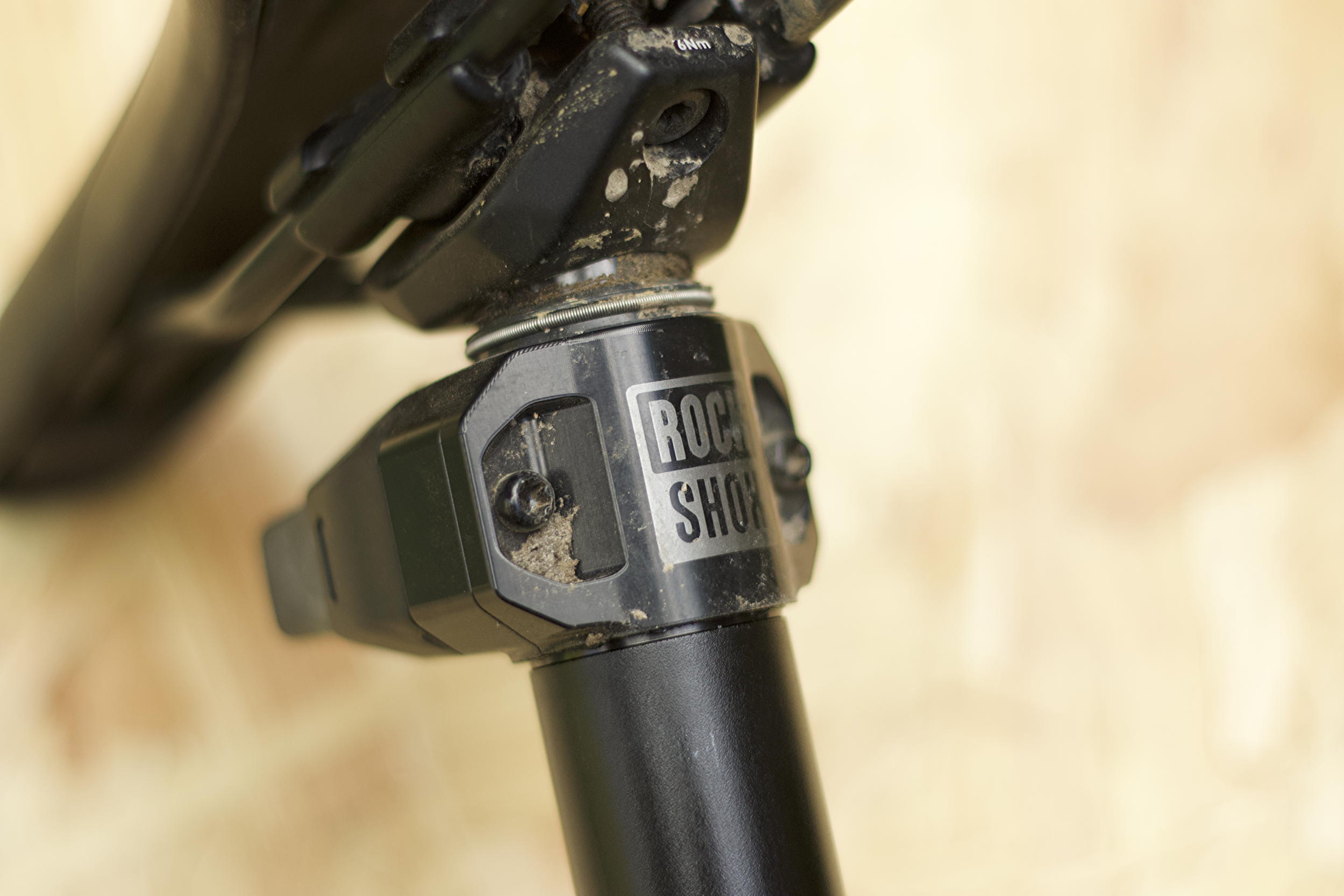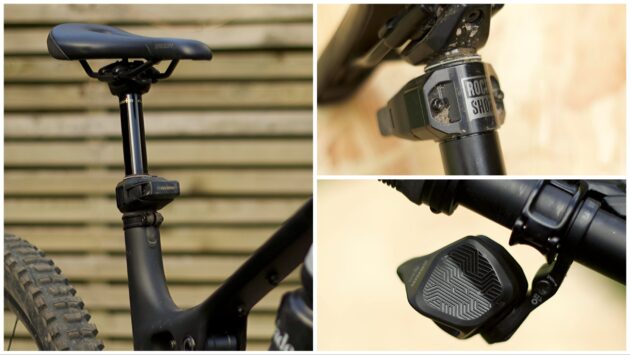RockShox’s venerable dropper post gets a major overhaul, with longer drops, new battery location, and built-in suspension.
It was the dropper post that brought wireless speed and convenience to the market, and the latest Reverb evolves with new features, extra lengths, and claimed improvements to durability and ease-of-maintenance. We’ve also rated it highly in previous tests, and recommended it as one of the best dropper posts on the market. So this new version has a lot to live up to.

The new Reverb moves the battery from the head to the collar, which doesn’t do a lot for the looks, but gains plenty of tyre clearance.
RockShox Reverb need to know
- New battery location at collar improves tyre clearance
- Available in drops from 100-250mm in 25mm increments
- ActiveRide adds suspension element when seated, but post remains rigid when topped out and bottomed out
- Comes in 30.9mm, 31.6mm, 34.9mm
- Weight 700g (31.6mm / 175mm length, plus 56g for the controller)
- Priced at £535

The stack height looks pretty tall, but it’s actually about the same as the old post thanks to improvements to the seat clamp.
What’s new?
The big flip for the new Reverb is the relocation of the battery to the seatpost collar, as Fox did with its Transfer Neo that came out last year. Why? Clearance is the principle advantage of shifting the battery from the head to the base. Early long-travel 29ers, particularly those with slack seat angles, had some issues with tyres buzzing the battery, and this redesign does away with that problem. Although, to be fair, it’s not something we’ve experienced or heard many riders complain about.

It’s a standard AXS battery, so cross-compatible with mechs and suspension parts, as well as the old Reverb.
Old battery, new home
RockShox still uses the same AXS battery from the old Reverb AXS and all SRAM’s other wireless components, so spares are readily available.
However, the collar on the new Reverb is relatively tall at 40mm, which is taller than the previous generation by 10mm, and much taller taller than the Fox Transfer Neo (just 26mm). Fortunately, RockShox has been able to borrow back room from the head, where the saddle clamps, so there’s no net change to stack height. On the other hand, this was an area where the old Reverb was ripe for improvement, and RockShox has missed the opportunity to do so.

RockShox is keen to trumpet the new Reverb’s ease-of-service.
Big drops
While the previous Reverb only came in drops up to 170mm, leaving many taller riders out in the cold. The new Reverb comes in lengths from compact and bijou to bleeding nose high-rise. In numbers, that’s 100mm to a whopping 250mm in 25mm increments. More than enough for even the tallest rider.

Any AXS shifter can be paired with the new Reverb, although it comes with the rocker paddle version of the latest controller.
AXS integration
The new Reverb is fully compatible with all the AXS wireless controllers, and fully configurable using the AXS app. So, theoretically, you could even assign your lower right-hand AXS pod button as the dropper release. Naturally, fitting is as easy as sliding the post into your frame and pairing it with the controller on the handlebar.

Moving from the side clamp head to the more common upper/lower design from the old Reverb has its pros and cons, but the stack height is much better as a result
ActiveRide
This feature, originally launched on the Reverb XPLR gravel dropper, lets the post move up and down in its travel on the air spring, giving an element of suspension when seated. I know what you’re thinking; didn’t all the old Reverbs have that feature after a few months?! And while ActiveRide sounds a bit like dressing a fault up as a feature, it’s actually quite different in reality. The old bouncy Reverb was caused by air in the hydraulics, but since the new post doesn’t have any hydraulics, it’s completely different. Not least because the post is locked and doesn’t move when topped out and bottomed out. It’s only when you drop the post into its travel that the squish happens.
So why is this useful? Anyone who’s ridden on on rough ground while sitting down – whether on an e-bike, or a conventional bike – will probably have noticed how bumps really interrupt your pedal stroke. Yes, rear suspension helps, but on flat ground and climbs, you tend to be in a lower gear, where the anti-squat is at its highest, so there’s always an impact on pedalling. With ActiveRide, the post absorbs some of those bumps, and because the seat-to-pedals distance shortens, your leg has more range of motion to accommodate the movement and maintain cadence. I can hear a lot of you groaning about giving us something we don’t need, but having ridden it, I think it’s a really cool feature.

At 750g for the controller and post, this is not a lightweight system.
Simple servicing
With no hydraulics to worry about, the new Reverb is easy to service. RockShox recommends an overhaul every 300 hours, which basically means annually, and the new internals means its quick and easy to strip down and service.




